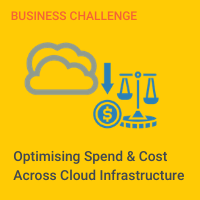
A study by Gartner points to organizations continuing and evolving IT plans that ramped up fast to move to the cloud in response to COVID-19.
Lessons learned from migrating to the public cloud to cope with remote operations may fuel ongoing IT strategy, according to a study by Gartner. The firm predicts 2021 will see an 18.4% growth in public cloud end-user spending, which is projected to reach $304.9 billion worldwide. That is up from $257.5 billion in spending in 2020.
Cloud spending growth is happening in multiples of overall IT services spending rates, says Sid Nag, research vice president with Gartner. “That’s going to continue.” The projections are part of an overall forecast from Gartner on public cloud services through 2024.
Learn more about optimising spend in the cloud.
Nag says while there was a bit of a dip in general IT services spending because of the pandemic, cloud growth continued despite that trend. “One debate that was retired, as an outcome of the pandemic, is whether the public cloud is an operational model for organizations,” he says. This change in perspective was driven by the fact that the pandemic forced personnel to manage datacenters without physically entering buildings, Nag says.
The presence of the cloud in the IT landscape is poised to continue to grow. Gartner projects that by 2024, cloud will make up to 14.2% of total global enterprise IT spending. Currently in 2020, cloud makes up 9.1% of global enterprise IT spend.
Application infrastructure services is expected to see the greatest spending margin increase in 2021, according to Gartner’s research, projected to reach 26.6%. Software as a service should remain the largest part of the cloud market with $117.7 billion in projected spending.
In many ways, IT has crossed a point of no return with the cloud. “A lot of workloads that were perceived to be not eligible for moving to the cloud, due to things like security, governance, and their mission critical nature, were compelled to move to the public cloud,” Nag says. Now that organizations have seen positive results from migrating to the cloud and cloud providers responded to their needs, he says those workloads are not going back to pre-pandemic operational models.







